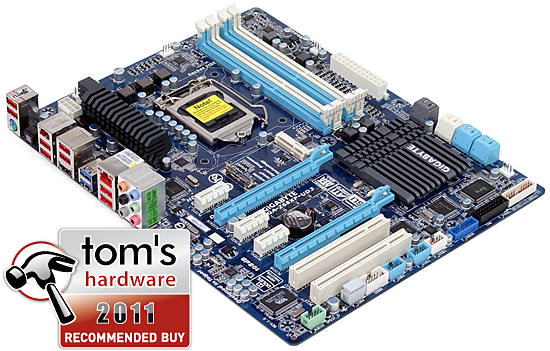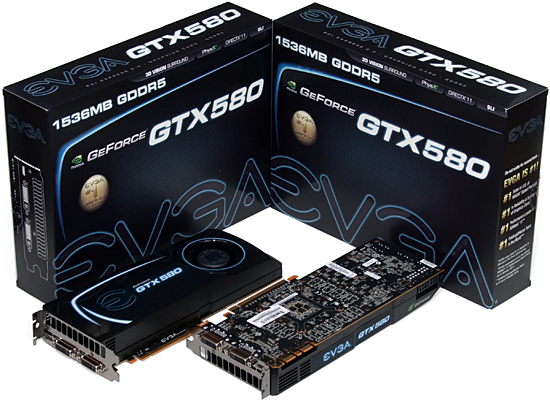System Builder Marathon, Sept. 2011: $2000 Performance PC
Motherboard And Graphics
Motherboard: Gigabyte Z68XP-UD3
Have you ever wished you could go to a computer store, buy everything on the shelf, and then decide for yourself which parts to keep? Review editors are privileged to have actually tested much of the hardware they use in system builds, and there’s nothing better than a value award to explain why this editor picked Gigabyte’s upper-mainstream model.
Intel’s Z68 Express chipset supports Quick Sync video transcode acceleration, plus discrete graphics via Lucid Virtu software, which is a feature we value (even though it’s not supported by our SBM benchmark set).
Read Customer Reviews of Gigabyte's Z68XP-UD3
Gigabyte chooses the least-expensive way to add SLI support to its Z68XP-UD3, switching from a single x16 slot to two x8 slots when both cards are installed. That’s not a problem for us however, since Nvidia graphics aren’t particularly bandwidth hungry even when configured in SLI mode. A greater concern to us is whether a motherboard with no sink on half of its voltage regulator will provide the stability for our overclocking attempts, even though it worked well at voltage levels only slightly below today’s target.
Graphics: EVGA GeForce GTX 580 1.5 GB in SLI
Only the cheapest GeForce GTX 580 graphics card would allow us to upgrade from our previous build’s Radeon HD 6970s, and we were surprised to find EVGA’s lifetime-warranty-bearing -AR model among them.
Read Customer Reviews of EVGA's 015-P3-1580-AR GeForce GTX 580
What isn’t there to love about EVGA’s 015-P3-1580-AR? Really, there's only the possibility that these particular cards will resist our overclocking efforts, since EVGA is known for binning its cards to sell the more scalable GPUs at a higher price. As a result, samples most likely to overclock the highest will have likely already been set aside for more premium cards. Still, we value the lifetime warranty on this reference frequency-based model.
Get Tom's Hardware's best news and in-depth reviews, straight to your inbox.
-
wrazor Great article. I am wondering, if instead you had gone with the EVGA 3GB GTX 570 SLI, maybe OC would have been possible? 2000$ is quite a bit of money. I wonder how these babies would hold out for Nvidia's 3D experience? Personally I am not a big 3D fan in theatres(headache and stuff), but gaming has to have a chance. You had an article on projectors gaming experience? Do it with 3d performance\eyefinity with the system marathon builds? That would be really cool. :)Reply -
Yargnit I'm actually surprised that after the recent micro-stutter article you didn't opt for 3x 570's/6950's/6970's instead of 2x 580's. the First two should be cheaper than 2x 580's, while the third would cost very similarly.Reply
All three should have provided at least equal performance, and been better on intangible benefits to micro stuttering. -
DjEaZy ... a bit of stagnation in performance department... no big difference in Q2 and Q3 models... gonna wait til bulldozer...Reply -
decembermouse Poor case decision. Inadequate PSU (did you seriously expect good overclocking results?). Nice graphics, but severely limited by the other components. Hence, "nice graphics" doesn't matter. It's like putting a V10 inside a Dodge Neon. Just... why? I make a point of using good cases even in less-expensive builds. Compromising on PSU and the case are two things I've learned are no-nos. We can see how this hurt the outcome, When any OC whatsoever results in instability, you've made a mistake (or several).Reply
Now I know we'll see the usual "well this is meant to be a learning experience, learn from our errors and improve for next time" comments, but these are not mistakes I expect to see Tom's writers making. Even non-uber-enthusiast readers can probably see that some of the imbalances here. No result is horrible, but I'd have expected Tom's to look at that Newegg shopping cart and immediately think "nope guys, this isn't right. This gfx setup... in an Antec 300?" etc.
Always love these articles guys, keep them up! Even if I do disagree with some of the choices obviously ;) Really looking forward to $1k and $500 builds in the coming days! -
anonymous x decembermousePoor case decision. Inadequate PSU (did you seriously expect good overclocking results?).No, this case cools better than many (most?) cases more expensive than it. 2x 120mm intake is more than adequate for SLI cards with room for air to flow between them. Did you even look at the power consumption numbers? The system when overclocked only consumed 697w at load from the wall (actual consumption is less), while the PSU is rated at 850w.Reply -
Pawessum16 Where the heck did they get that SSD for $170????? It's $205 on Newegg, and that's after a $35 price drop. What a steal....Reply -
Hupiscratch These SBM keep becoming cheaper. At first was 5k, then 2.5k and now is 2k for the enthusiast one. The recession is beating hard.Reply -
jestersage maybe one of the 120mm fans should have been placed on the side panel? just wondering...Reply -
iam2thecrowe all i have to say is, ditch the crappy Gigabyte motherboard and get sonething better, and for the price difference get the i5 2500k, its no real loss to the i7.Reply





